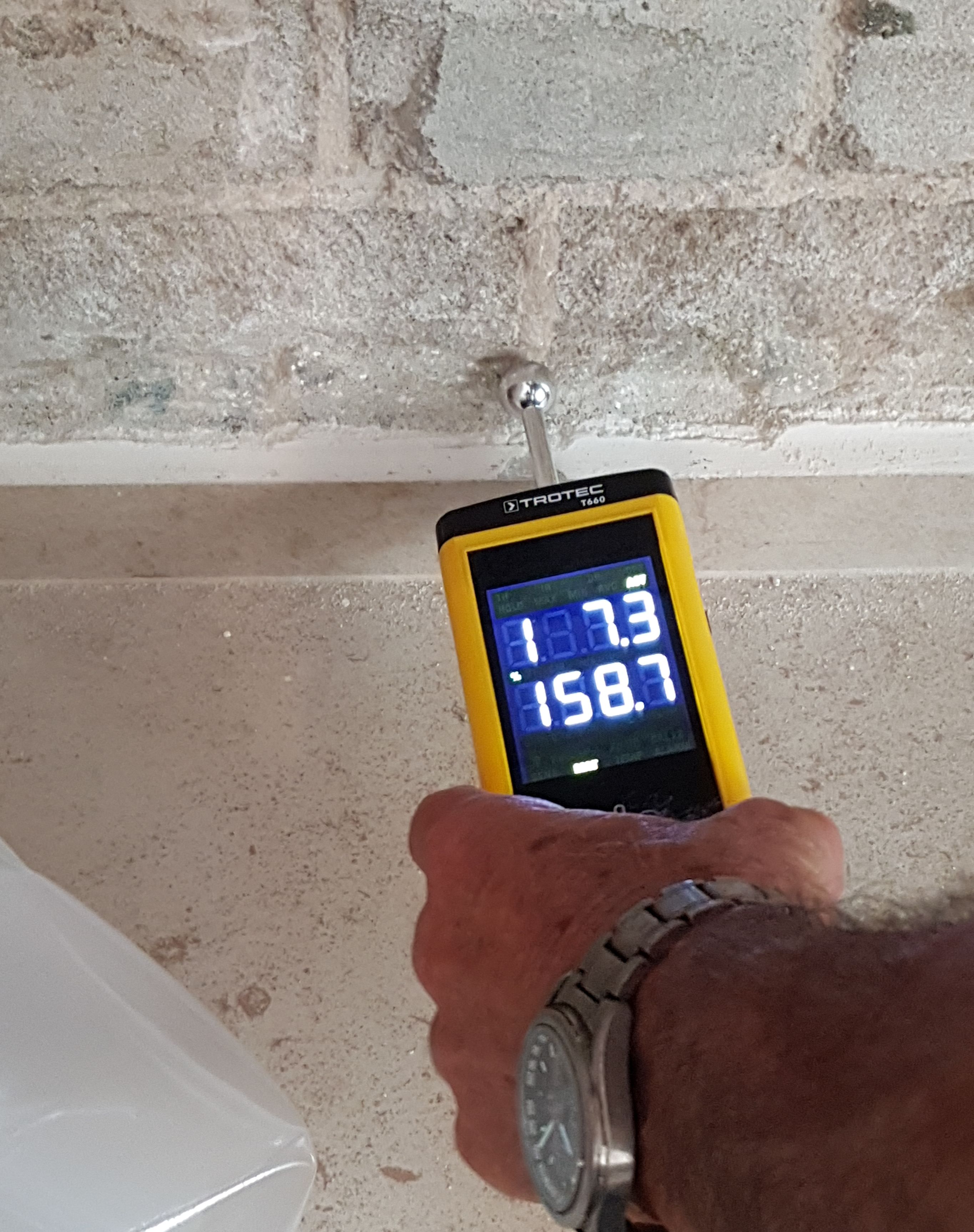Understanding the Value of a Moisture Meter in Protecting Against Mold and Water Damages in Your Home
In the world of home upkeep, the presence of wetness can usually be a silent yet formidable enemy, qualified of creating prevalent mold and mildew growth and insidious water damage if left untreated. Comprehending the value of a moisture meter in this battle is not merely a choice yet a strategic necessity.
Significance of Moisture Discovery
Efficient wetness discovery methods are vital for guarding buildings and preventing prospective mold and mildew growth and water damage. Moisture can leak into numerous building materials, leading to structural issues and carcinogen. By making use of a dampness meter, homeowner can proactively identify locations vulnerable to excess dampness, enabling prompt treatment and reduction methods.
Moisture meters supply precise analyses of dampness degrees in different materials such as wood, concrete, and drywall. This information assists in pinpointing locations of worry, even in hidden or hard-to-reach locations. Early detection of dampness build-up enables punctual repair work or adjustments to stop additional damage.

How Moisture Meters Job
Wetness meters play a critical role in the aggressive identification of excess moisture, assisting in the prevention of possible mold development and water damages by providing accurate analyses of wetness degrees in different building materials. These gadgets function based upon different principles, relying on their kind. Moisture Meter. Pin-type dampness meters, for example, have 2 pins that pass through the material to gauge the electrical resistance between them. When wetness is present, it boosts the material's conductivity, bring about a lower resistance analysis. Pinless moisture meters, on the other hand, usage electromagnetic sensing units to check the material without creating damages. These sensors emit electro-magnetic signals that pass through the material and determine the dielectric homes, showing moisture material. Some progressed moisture meters pin both integrate and pinless modern technologies for extensive wetness discovery. Understanding exactly how moisture meters feature is essential for precise and prompt moisture level evaluations, making it possible for efficient preventive steps versus mold and mildew and water damages.
Detecting Early Indication
Upon initial evaluation of a building, identifying subtle indicators of excess moisture comes to be critical in the very early detection of potential mold and mildew development and water damage. Some common very early caution indications include stuffy smells, water spots on walls or ceilings, peeling off paint or wallpaper, and distorted or stained surfaces. Stuffy smells typically indicate the visibility of mold and mildew or mildew, even if no noticeable indications appear. Water stains can signal leakages or seepage, while peeling off paint or wallpaper may be a result of dampness jeopardizing the adhesion of these materials to the surface area. Distorted or stained surface areas, such as buckling floorboards or blemished drywall, are clear indications of water damages. In addition, an increase in allergic reaction signs and symptoms or breathing issues amongst occupants might recommend the existence of mold because of excess moisture. By without delay determining and addressing these early caution signs, home owners can reduce the threat of comprehensive mold and mildew development and water damage in their properties.
Avoiding Mold Growth
Recognizing early indication of excess moisture within a residential or commercial property not just allows timely detection of potential mold and mildew development and water damages however also functions as an aggressive action in protecting against the expansion of mold. To effectively protect against mold and mildew see this website growth, it is essential to address any kind of sources of moisture without delay. This can include repairing leakages in roof coverings, pipes, or home windows, making certain correct ventilation in wet areas like kitchens and washrooms, and using dehumidifiers in high-humidity rooms. Consistently examining and maintaining the property's plumbing, roofing system, and gutters can likewise aid in avoiding water invasion that could result in mold and mildew growth.
Along with resolving moisture resources, keeping indoor moisture degrees listed below 60% can considerably prevent mold and mildew development. Correct air flow, ample insulation, and using air conditioning system or followers can help regulate indoor moisture degrees. her response Keeping track of wetness levels in areas susceptible to moisture, such as basements and crawl areas, utilizing a dampness meter can additionally aid in early detection of raised dampness degrees and possible mold and mildew growth. By taking positive steps to stop excess dampness and mold and mildew development, house owners can secure their property and interior air high quality.
Advantages of Regular Surveillance
Routine monitoring of dampness levels in a residential property can play a vital role in keeping a healthy interior environment and preventing prospective mold and water damage. By routinely examining moisture degrees, homeowners can find any concerns promptly and take needed actions to avoid mold development and water damages. One of the crucial advantages of regular surveillance is very early detection. By determining and addressing high wetness degrees early on, house owners can interfere before mold has the possibility to spread and establish. This aggressive approach can save both money and time in the lengthy run by preventing substantial mold and mildew remediation and repair work you can try these out expenses.
In addition, routine monitoring permits house owners to track patterns and trends in dampness levels over time. Inevitably, the constant monitoring of dampness levels encourages property owners to shield their residential property, protect their health, and maintain the honesty of their indoor setting.

Verdict

By using a dampness meter, home owners can proactively determine locations vulnerable to excess dampness, allowing for timely treatment and reduction approaches.

Keeping track of wetness levels in areas prone to dampness, such as cellars and creep spaces, using a moisture meter can also assist in very early discovery of elevated moisture levels and possible mold and mildew development. (Moisture Meter)